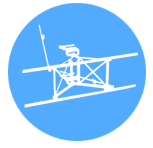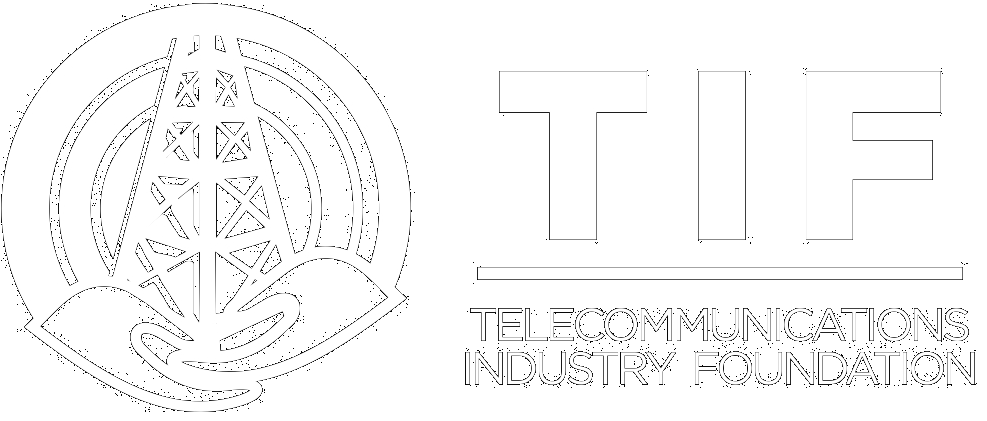Content Resources
Search our library for various resources and documentation supporting the telecommunications industry:

Codes & Standards (14) +
Structural Standards for antennas and their supporting structures are outlined in ANSI/TIA-222. These set of standards comply with the Internationa ...
The use of ANSI/TIA-322-A & ANSI/ASSP A10.48 promotes increased quality, efficiency, and safety by improving and encouraging effective communicati ...
The telecommunications industry has proactively responded to major shifts in construction practices with the introduction of ANSI/TIA-322 ‘Loading, ...
TIA-5053-A, Mounting System Classification has been recognized as the preeminent standard for classifying both new and existing mounts, as well as nor ...
There have been recent FAA and FCC regulation changes in aviation obstruction lighting, marking, and monitoring of towers. Recent and upcoming lightin ...
Post Installation Inspection (“PII”) and Post Modification Inspection (“PMI”), play a crucial role in ensuring proper installation in accordan ...
This TIF White Paper offers detailed explanations of the determining factors that dictate a telecommunications structure� ...
Due to the end user’s network requirements, wireless telecommunications projects may be installed on various types of vertical infrastructure. Becau ...
This PAN provides an overview of the most significant changes between ANSI/TIA-222-H and ANSI/TIA-222-I. The discussion includes, but is not limited t ...
The TIA-5053-A Mounting System Classification standard underwent a revision on April 19, 2023, with critical updates. The 5053 update committee's prim ...
The TIA-TSB-5053 Bulletin on Mounting System Classification is a comprehensive document. This PAN delves into the different uses for this Bulletin and ...
Structure owners are all too familiar with this scenario, a contractor calls and says “We’re on site but there’s a nest on the tower. What do we ...
Telecommunication supporting mounts, towers, and small cell structures are frequently expo ...
With the increase demand for connectivity to telecommunications infrastructure, the deployment and utilization of small c ...

Engineering (18) +
If anchor bolts are observed at heights that exceed limits set by the ANSI/TIA-222 Standard, they must be restored to compliance. Oftentimes, non-co ...
TIA-5053-A, Mounting System Classification has been recognized as the preeminent standard for classifying both new and existing mounts, as well as nor ...
Following the 2022 TIF Rooftop Sled Mount Testing, two mount manufacturers completed additional testing to determine the coefficient of friction value ...
Following the 2022 TIF Rooftop Sled Mount Testing, two mount manufacturers completed additional testing to determine the coefficient of friction value ...
As networks continue to expand across rural areas, microwave antenna site selection will continue to be an important link in creating the telecommunic ...
The evolution of the telecommunications industry has resulted in the application of effective engineering of towers and mounts to allow for proper ris ...
This PAN is intended to provide information from a holistic perspective on some of the design considerations for antenna supporting structures, by poi ...
Post Installation Inspection (“PII”) and Post Modification Inspection (“PMI”), play a crucial role in ensuring proper installation in accordan ...
The ANSI/TIA-222 Standard and the IBC have traditionally adopted the methodology of the ASCE 7 Standard for determining the minimum loading requiremen ...
In September 2022, TIF hosted an event with several mount manufacturers and industry engineering firms to test full scale rooftop ballast mounts. Th ...
Slip-splicing several monopole segments together is a common practice used to achieve required tower heights. Prior to assembling slip joints, it i ...
Quality, safety, and productivity are not isolated concepts, they have a symbiotic relationship that can greatly impact telecommunications infrastruct ...
Due to the end user’s network requirements, wireless telecommunications projects may be installed on various types of vertical infrastructure. Becau ...
Site specific factors such as geographic location, elevation, and surrounding terrain can greatly impact the wind force applied to a structure. Var ...
Telecommunication supporting mounts, towers, and small cell structures are frequently expo ...
This white paper summarizes the current building codes, industry standards, and design documents that are relevant to the ...
This TIF White Paper offers detailed explanations of the determining factors that dictate a telecommunications structure� ...
This TIF White Paper provides guidance on alternative analysis methods that can be utilized for foundation analysis and design. The inst ...

General Construction (11) +
Capstan hoists, or a “Cathead”, is utilized to make the lifting of loads easier and more productive. There are many applications and multiple i ...
The use of equipment such as slings, ropes, harnesses, and hard hats is critical to maintaining a safe working environment. Maintaining the integri ...
Part three of the Mobile Elevated Work Platform (“MEWP”) series focuses on the use of MEWP’s as it pertains to small cell installations. Work ...
A review of best practices for the use of Mobile Equipment Work Platforms (“MEWP”) within the telecommunications industry. MEW ...
There are different classifications of Mobile Elevated Work Platforms or MEWPs. Although sometimes mischaracterized as bucket trucks there are many ...
Post Installation Inspection (“PII”) and Post Modification Inspection (“PMI”), play a crucial role in ensuring proper installation in accordan ...
An introduction to OSHA’s educational initiatives and compliance programs. Focus and attention are given to OSHA’s FAQ pages which contain valu ...
Providing efficiency, quality, and safety on a job site, starts with understanding everyone’s roles and how they must work together. This PAN provid ...
Providing efficiency, quality, and safety on a job site, starts with understanding everyone’s roles and how they must work together. This PAN provid ...
Slip-splicing several monopole segments together is a common practice used to achieve required tower heights. Prior to assembling slip joints, it i ...
The telecommunications industry is continually seeking to enhance coverage and support the communications needs of the United States. In some cases, t ...

Maintenance & Condition Program (6) +
ANSI/TIA-222-H Section 14.0 provides guidance for structure owners to develop a program for the maintenance of their structures based on their intende ...
When apparent leaning (or visible camber) is present in a monopole tower, there is a high likelihood that it is caused by the “Sunflower Effect” d ...
Corrosion creates a safety hazard and possibly an unaesthetic appearance of the structure. This PAN will analyze effective methods for combating co ...
Understanding the twist, plumb, and tension (“TPT”) of a guyed tower is critical to ensure a safe working environment when tower maintenance takes ...
This Planning Advisory Notice outlines the need for controlling vegetation around telecommunications structures to ensure safety, protect structural i ...
An explanation of the role of a Certified Weld Inspector (“CWI”) and the inspection activities required to ensure a successful project and a passi ...

Mounts (11) +
As networks are upgraded for 5G, End Users must consider whether their new or existing mounts can withstand the changes to increased quantity, weight, ...
As increased equipment loads are applied to existing mounts throughout the telecommunications industry, engineers are left with the decision to modify ...
TIA-5053-A, Mounting System Classification has been recognized as the preeminent standard for classifying both new and existing mounts, as well as nor ...
The purpose of this PAN is to educate industry professionals on best practices for designing, installing, and maintaining microwave antenna mounting s ...
The increasing demand on properly functioning telecommunication infrastructure elicits the need for innovative mount solutions. Selecting high-qual ...
Prior to climbing onto any antenna mount, a thorough inspection of a mount’s condition and development of a fall protection plan should be conducted ...
In September 2022, TIF hosted an event with several mount manufacturers and industry engineering firms to test full scale rooftop ballast mounts. Th ...
As the development of emergent technologies that are dependent on wireless connectivity (self-guided vehicles, eHealth, etc.) expands, so does the nee ...
Mount Analysis: Recommended Best Practices
TIA standards have b ...
For the better part of the last decade, an increased use of Small Unmanned Aircraft Systems (“UAS”), or drones, in the telecommun ...
In dense urban environments, rooftop wireless deployments offer practical alternatives to traditional macro towers but face significant challenges fro ...

Rigging & Rope (3) +
The use of equipment such as slings, ropes, harnesses, and hard hats is critical to maintaining a safe working environment. Maintaining the integri ...
Reviews the basic categories associated with safe rigging practices, including the calculations required before determining the size of the equipment ...
There are a series of rigging fundamental questions to be answered prior to beginning any load lifting activities. Individuals assigned to various ...

Safety (19) +
There are a series of rigging fundamental questions to be answered prior to beginning any load lifting activities. Individuals assigned to various ...
It is a very urgent matter when a tower climber needs a rescue plan. Tower crews are more equip with the expertise and experience in tower safety, mak ...
As carriers seek to enhance coverage, there is an increased need for the design, implementation, and maintenance of traffic control plans when providi ...
The use of equipment such as slings, ropes, harnesses, and hard hats is critical to maintaining a safe working environment. Maintaining the integri ...
While vertical safety climb systems are widely used on antenna supporting structures, there is an increasing use of horizontal lifelines. This PAN ...
Part three of the Mobile Elevated Work Platform (“MEWP”) series focuses on the use of MEWP’s as it pertains to small cell installations. Work ...
A review of best practices for the use of Mobile Equipment Work Platforms (“MEWP”) within the telecommunications industry. MEW ...
There are different classifications of Mobile Elevated Work Platforms or MEWPs. Although sometimes mischaracterized as bucket trucks there are many ...
With ever changing job site hazards and innovation of new safety equipment, it can be difficult to stay up to date on the latest safety measures and p ...
The Federal Communications Commission (FCC) has benefited the Telecommunications Industry, and the American People, significantly with the resources t ...
Radiofrequency Energy (“RF”) emitted by telecommunications antennas allows for efficient transmission of data; however, prolonged close proximity ...
The telecommunications industry is a rapidly evolving sector which places a high degree of pressure on all Stakeholders to maintain deployment schedul ...
When safety climb wire ropes are routed outside the intended path, stretched, pinched, or otherwise obstructed, they are rendered ineffective at provi ...
To further clarify the performance and intent of step bolts as part of a climbing facility, testing was conducted to verify current engineering design ...
Quality, safety, and productivity are not isolated concepts, they have a symbiotic relationship that can greatly impact telecommunications infrastruct ...
The telecommunications industry is continually seeking to enhance coverage and support the communications needs of the United States. In some cases, t ...
The goal of this TIF White Paper is to outline best-practices to avoid installations that harm the structure, climbing fa ...
Proper marking and lighting of telecommunications infrastructure is critical to support navigable air space. While it is the responsibility of the Fed ...
The Safety Equipment Manufacturers Committee (SEMC) created the standard guidance regarding wire rope safety climb/systems. Incorporating ANSI standar ...

Welding (4) +
An explanation of the role of a Certified Weld Inspector (“CWI”) and the inspection activities required to ensure a successful project and a passi ...
The American Welding Society (“AWS”) is tasked with developing standards for welders in the United States. It is critical to understand that fa ...
Overview of welding codes, standards, and specifications as they apply to proper welding design, performance, and inspection. Additional emphasis i ...
The most recent revision of the American Welding Society’s D1.1, Structural Welding Code - Steel was released in 2020. This PAN aims to cov ...

White Paper (13) +
Structure owners are all too familiar with this scenario, a contractor calls and says “We’re on site but there’s a nest on the tower. What do we ...
As the development of emergent technologies that are dependent on wireless connectivity (self-guided vehicles, eHealth, etc.) expands, so does the nee ...
Telecommunication supporting mounts, towers, and small cell structures are frequently expo ...
The goal of this TIF White Paper is to outline best-practices to avoid installations that harm the structure, climbing fa ...
This white paper provides a comprehensive overview of the standards, codes, and engineering practices governing direct-buried steel components in tele ...
With the increase demand for connectivity to telecommunications infrastructure, the deployment and utilization of small c ...
Mount Analysis: Recommended Best Practices
TIA standards have b ...
For the better part of the last decade, an increased use of Small Unmanned Aircraft Systems (“UAS”), or drones, in the telecommun ...
In dense urban environments, rooftop wireless deployments offer practical alternatives to traditional macro towers but face significant challenges fro ...
This white paper summarizes the current building codes, industry standards, and design documents that are relevant to the ...
This TIF White Paper offers detailed explanations of the determining factors that dictate a telecommunications structure� ...
This TIF White Paper provides guidance on alternative analysis methods that can be utilized for foundation analysis and design. The inst ...
Proper marking and lighting of telecommunications infrastructure is critical to support navigable air space. While it is the responsibility of the Fed ...

Workforce Development (3) +
Who is an “employee”? While this premise may seem simple, there are a myriad of statutes, regulatory requirements, ...
Injuries suffered in the telecommunications industry can be catastrophic to businesses. To mitigate th
For the better part of the last decade, an increased use of Small Unmanned Aircraft Systems (“UAS”), or drones, in the telecommun ...
Archived (7) +
The TIA 1019-A Standard has many applied uses. In this month’s PAN we will focus on why tower owners, engineers and contractors should apply this st ...
The March/April 2013 PAN introduced some of the concepts detailed in the ANSI/TIA-1019-A Standard for installation, alteration and maintenance of ante ...
This article is targeted to engineering managers of utilities that are planning to build a single microwave path or a wide area microwave network buil ...
Application of ANSI/TIA-222-G structure classes to communication tower design and analysis is frequently misapprehended. Risk categorization establish ...
Very few facets of tower ownership pose the liability to the tower owner that improper lighting, marking, and monitoring do. In Order 13-30 released M ...
Guyed towers are popular because of their economical advantages over self-supporting and monopole towers. They can be constructed to much greater heig ...
The Telecommunications Industry Association is dedicated to support the telecommunications industry and our society through its ability to listen and ...
Content Disclaimer:
Content published by the Telecommunications Industry Foundation (TIF) is informational in nature, and formulated based on the opinions of the authors. This content is intended to solicit feedback to TIF as the information may mature with time and additional information.

